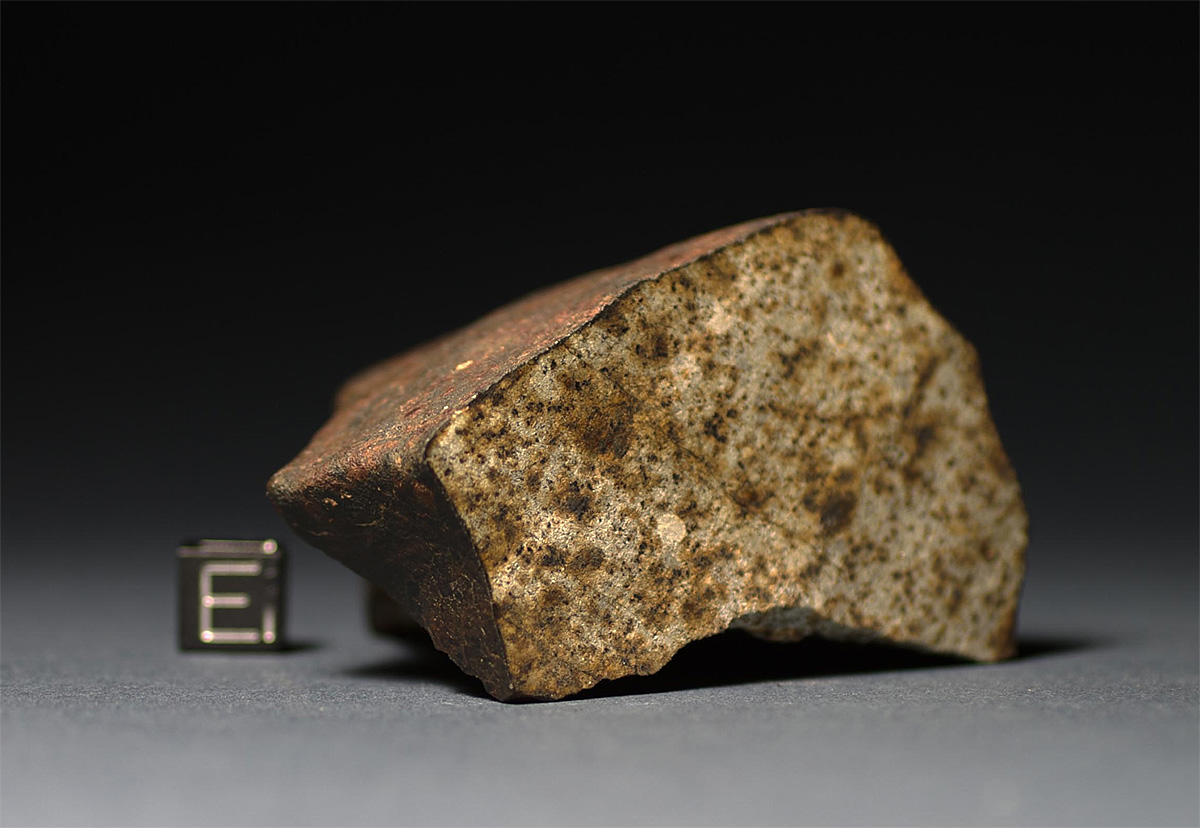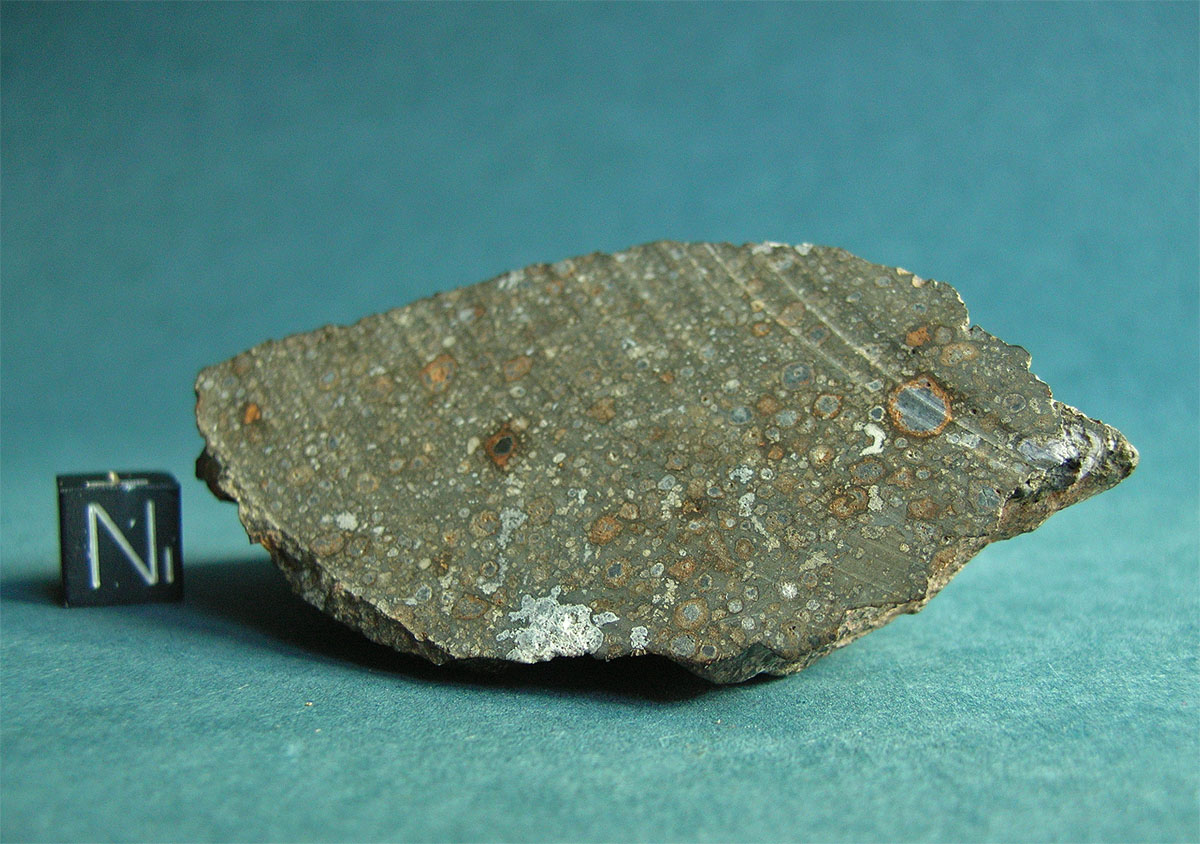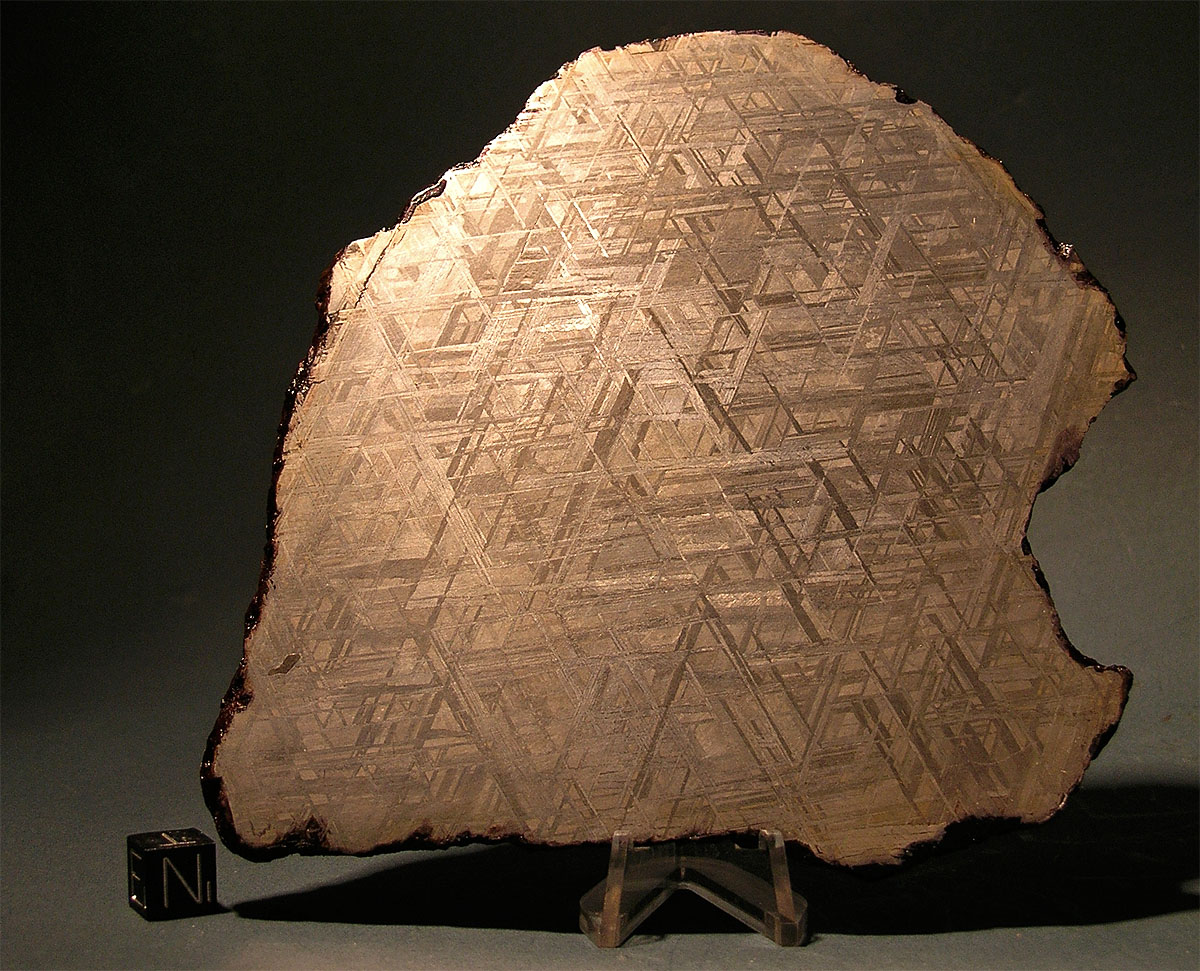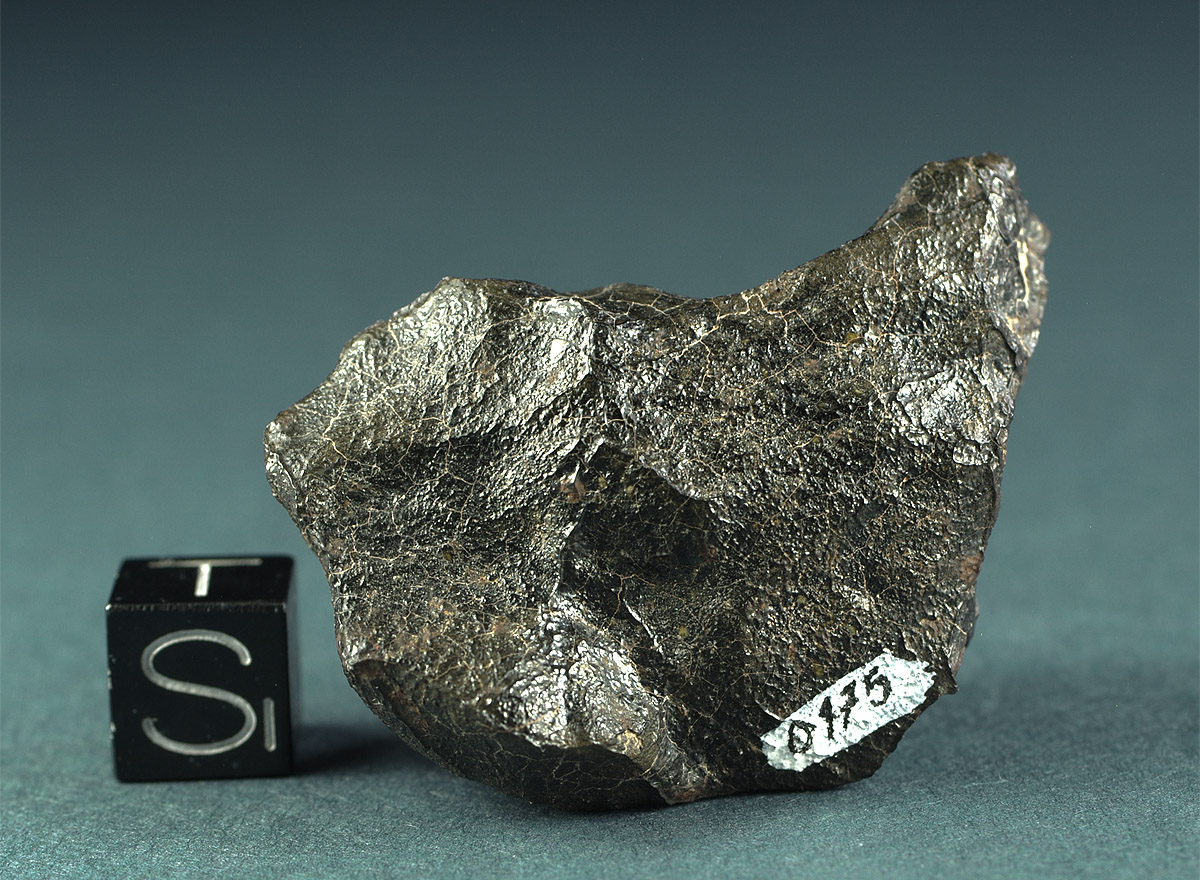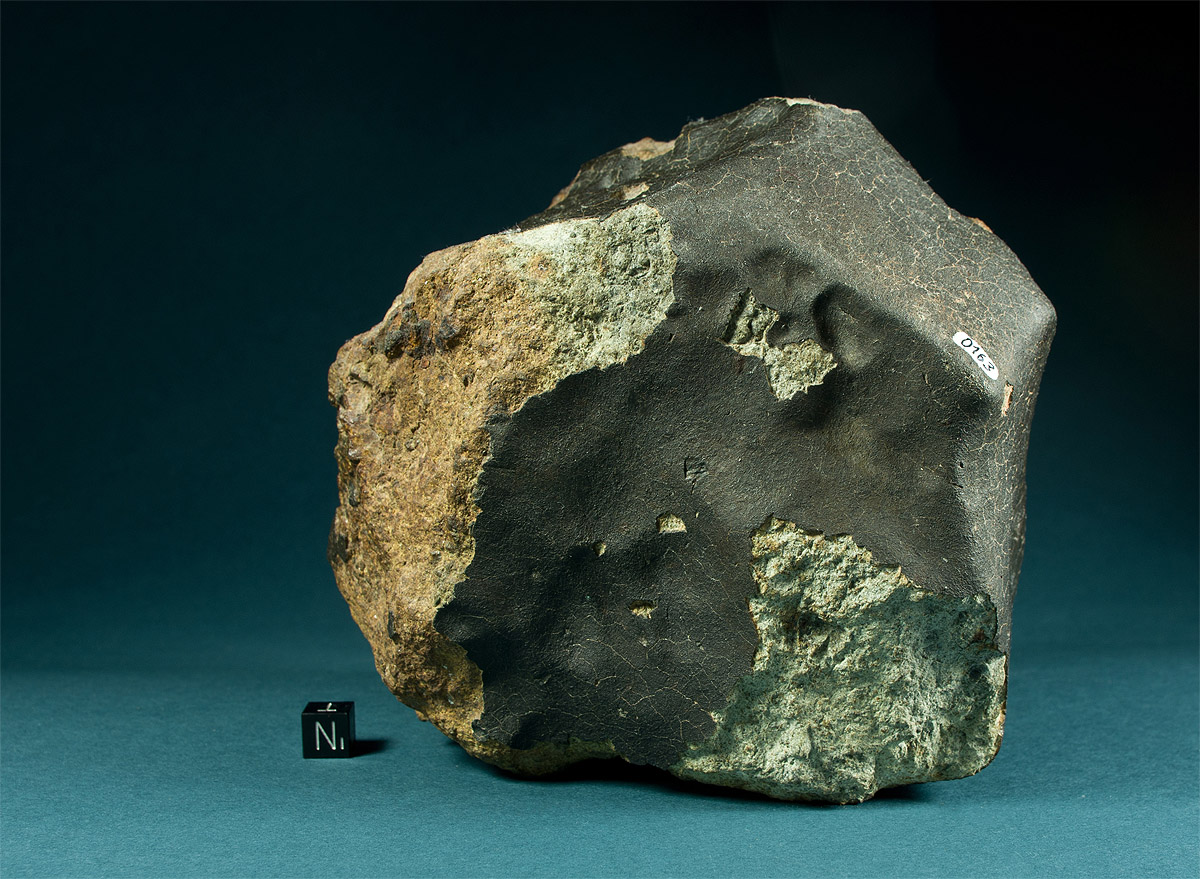Meteorite Recon | Finds
Meteorite search expedtions into continental deserts, meteorite features, collection specimens and photography
Meteorites, Meteorite, meteoritic, iron, meteorites, photos, pictures, in situ, strewnfield, strewn field, impact, fall, finds, Meteorite searching
149
archive,paged,tax-portfolio_category,term-finds,term-149,paged-2,eltd-core-1.0.1,ajax_fade,page_not_loaded,,borderland-ver-1.8, vertical_menu_with_scroll,smooth_scroll,paspartu_enabled,paspartu_on_top_fixed,paspartu_on_bottom_fixed,transparent_content,grid_1300,wpb-js-composer js-comp-ver-6.0.3,vc_responsive,elementor-default,elementor-kit-6471
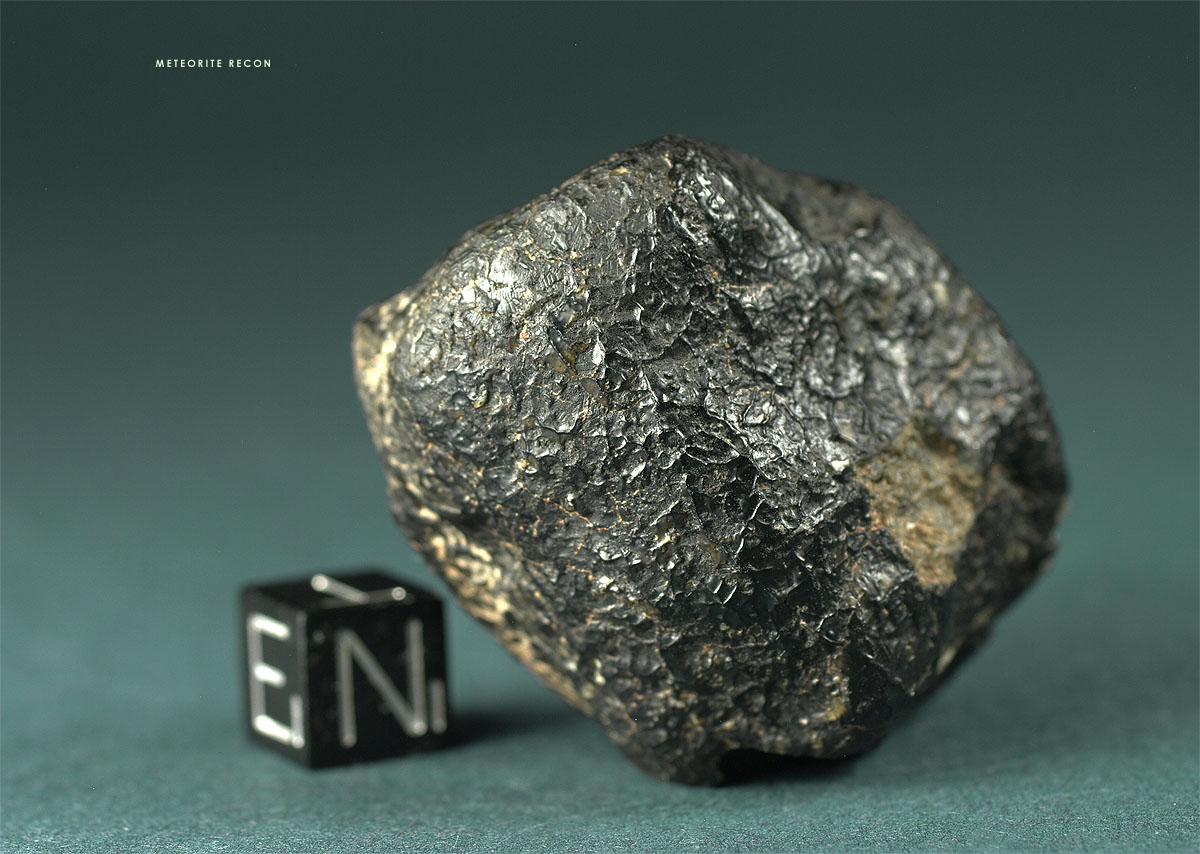
HED-achondrite, eucrite
Purchased from a dealer in Ouzarzate, Feb 2009
TKW: 48.0 g
Individual: 48.0 g
This meteorite was purchased as a “special stone” in February 2009 from a Moroccan mineral dealer. Neither the precise find location nor the name of the finder is known. It was said to be found in the Morrocan Sahara. The meteorite has the size and shape of a fig and shows a glossy black fusion crust as well as a lightly oriented shape with a convex front and a concave rear surface. The dimensions are 4.40 x 3.65 x 2.75 cm, the weight of the stone is 48.0 g.
On two spots the fusion crust is missing, first, on a 7 x 7 mm chip, that probably goes back to the time of the fall as it already shows a darkened matrix coated with forming caliche. The second damage is a missing corner of 14 x 12 mm that was appearently cut out of the meteorite with a hand saw . Beginning light red caliche deposits are marking the meteorite’s lower portion of the broadest surface, which was embedded in a light red soil with clay constituents. The overall appearance of the meteorite is very fresh.
Due to a burred texture composed of delicate spines and ridges the glossy black fresh fusion crust gives the meteorite a crumpled appearence, much like a dried prune. Several patches of the fusion crust show a vesicular structure in the sub milimeter range. Also, Obviously the meteorite is composed of inhomogenous constituents with differing melting points, which lead to a granular and uneven ablation of its surface.
The fusion crust displays two noteworthy features. First, glass pockets can be seen solidified in various stages of melting, from clear and transparent to coffee and honey colored and semi opaque to a full opaque glossy black. The second characteristic of the fusion crust is the display of grain boundaries, apparently due to selective ablation of different mineral components. The grain boundaries are visible in the shape of parallel structures reaching lenghts of up to 4 mm. These parallel structures seem to represent underlying coarse grains with barred crystallization patterns. On several spots glass pockets are seperating these grains.
As can be seen in the image of the cut section below, the meteorite appears to consist mainly of a pyroxenes and feldspathic glass (originally plagioclase). In fact a large percentage of the matrix shows grains of transparent and semi transparent glass. Under the microscope these glasses often reveal Vesicular pockets with trapped melt inclusions indicating a shock event on the motherbody. One other striking feature of the matrix is the relatively coarse grain size indicating a cooling at a relatively slow rate.
Under magnification, the cut section prepared for classification reveals the parallel orientation of the lammellae zoning within the grain structure. As the write up from NWA 5787 in Met.Bull. No. 98 points out, these features bear witness to a strong shock event on the meteorite’s mother body: “The plagioclase consists of multiple domains of subparallel, ribbon-like microcrystals, suggestive of quenching from shock melt (as in some shergottites)”.
The cut surface detail shown above resembles a rather porous section of the meteorite. Glass grains and parallel lamellae are visible. As can be expected no general orientation of the parallel crystallization pattern is obvious, each barred grain shows a different allignment of its orientation axis.
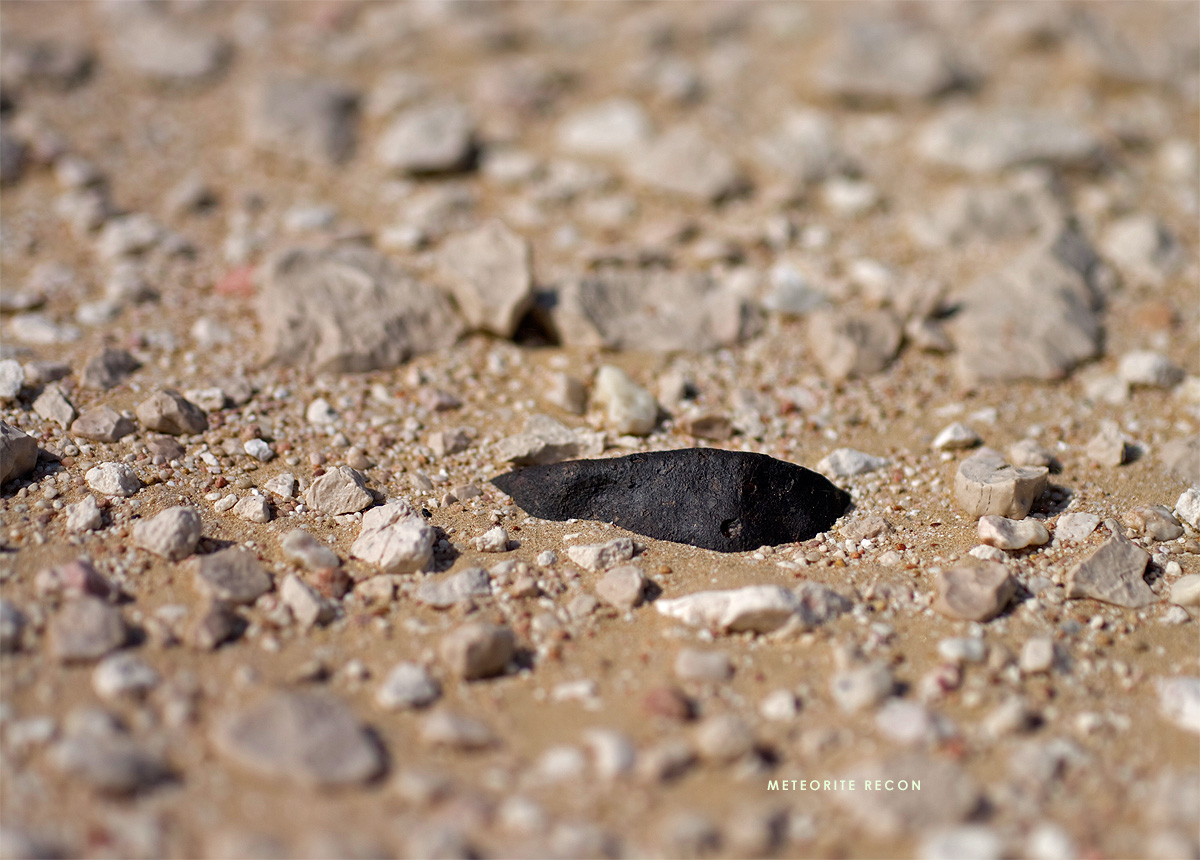
Stone, ordinary chondrite L4-5, S2, W1
Sayh al Uhaymir, Sultanate of Oman
Find: March 16, 2000
TKW: 408 kg
Individual 194.5 g
Fully crusted individual showing well preserved fusion crust on a small corner that was protruding from the sand. The larger portion of the meteorite was burried in the sand and displays caliche coating with quartz sand grains embedded in the deposit. The lower image shows the meteorite in situ. Note the difference in surface preservation between the embedded and the exposed portion.
Sayh Al Uhaymir 001 (SAU 001) is among Oman’s largest known meteorite showers. With more than 2670 fragments collected and mapped by Russian researchers it is beside JAH 073 one of the best researched strewn fields in the Omani desert. The mapped find locations of the SAU 001 meteorites show a typical distribution pattern indicating that the SAUH 001 bolide traveled from northeast to southwest, bearing 233°, and breaking-up in several stages under a trajectory angle of 70°. In 2003, during the 66th Annual Meteoritical Society Meeting, a paper on the distribution pattern of the SAU 001 meteorite field was contributed by A. V. Korochantsev et al.: A STUDY OF THE FRAGMENT DISPERSAL AND TRAJECTORY OF THE SAYH AL UHAYMIR 001 METEORITE SHOWER.
.
Stone, chondrite, L6, S6, W1
Al Jufra, Libya
Find: 1997
TKW: 982.00 g
Endcut 206.00 g
This streamlined endcut of DAG 364 comes from one of the earliest finds in the Dar al-Ghani. It shows a moderately oxidized crust and a very fresh matrix that has a weathering grade of only W1. As the cut section shows the crust on DAG 364 reaches a thickness of up to 1 mm and is particularly well defined.
Stone, ordinary chondrite, H4-5, S2, W2-3
Gharyan, Libya
Find: May 30, 2004
TKW: 880.00 g Fragment 46.40 g
One of 24 fragments that were found during the 3rd Meteorite Recon Expedition in May 2004 in the Hammdah al Hamra in Libya. The photo shows the meteorite in situ. This particular image made it to the cover of O. Richard Norton’s Field Guide to Meteors and Meteorites.
Stone, carbonaceous chondrite, CV3
Purchased in Erfoud, Morocco
Find: 2003
TKW: 5.895 kg
Endcut 99.10 g
Endcut with large CAIs and olive drab matrix. Matrix consists of nothing but densely packed chondrules in wide crystal pattern variation, extremely beautiful specimen. Hundreds of fragments (total weight of 5,895 g) were purchased in Erfoud, Morocco in December 2003 by A. and G. Hupé. Description and classification (T. Bunch and J. Wittke, NAU): olive gray to tan in color depending on the degree of weathering.
Iron, fine octahedrite, IVA
Kitkiojoki, Norbotten, Sweden
Find: 1906
TKW: >1 MT
Fullslice 494.10 g
Many more masses have been found in a glacial moraine since the first discovery of a single meteorite in 1906 by Mr. Carl Henriksson. Muonionalusta is known for its striking Widmannstätten pattern. Because of the chloride-rich soil the Muonionalusta meteorites are recovered from, the iron tends to rust, usually from the edges towards the centre. This fullslice was kept for several weeks in an acetone bath and neutralized with an NaOH bath after the etching process. It remains fairly stable since.
Stone, chondrite, LL5, S2, W0
Tiris Zemmour, Mauretania
Find: October or November 2006
Fell at least several decades ago
TKW: 779.00 g
Fragment 591.10 g
Flat, trapezoid-shaped meteorite fragment, apparently a half individual. As reported by the finder, the Noktat Addagmar meteorites fell “recently”. Measuring of the short lived radionuclides, however, prooved that the meteorite shower must have occured at least several decades ago. The LL5 chondrite looks extremely fresh and shows a plethora of fusion features including melt rims, splash marks, bubbling and flow lines. Particularly aesthetic specimen.
Iron, plessitic octahedrite, iron ung.
Taza, Morocco
Find: 2001
TKW: 74.30 kg
Individual: 1,677 g
Shield-shaped mass with distinct regmaglypts on the trailing surface. Until 2010, several hundred specimens were recovered from the Taza strewnfield, inluding many dozens of kg-sized regmaglypted masses. Meanwhile, the find location is depleted. A two-week Russian expedition with state of the art metal detecting equipment that was conducted in Spring 2014 yielded no further finds.
The second collection specimen is a hield-shaped mass with distinct regmaglypts on the trailing surface. Until 2010, several hundred specimens were recovered from the Taza strewnfield, inluding many dozens of kg-sized regmaglypted masses. Meanwhile, the find location is depleted. A two-week Russian expedition with state of the art metal detecting equipment that was conducted in Spring 2014 yielded no further finds.
Stone, achondrite, Ca-rich, metal-rich eucrite, AEUC
Camel Donga, Nullabor Plain, Western Australia
Find: January 1984
TKW: >7.6 kg
Individual: 34.60 g
Irregular shaped individual with pristine glassy crust, delicate contraction cracks and flowlines on all surfaces. 12 stones were found in 1984 and 1985 within a radius of 1 km by Mrs. J.C. Campbell, B. Mason and W H. Cleverly. Judged by the lack of patina the Camel Donga meteorites were discovered shortly after their fall. However, as no eye wittnesses could be identified the meteorite was classified as a find. Highly aesthetic specimen,
Stone, chondrite, LL6, S2; W1 (prov.)
Western Sahara
Find: November 2006
TKW: 3.579 kg
Individual 3.540 kg
Fresh individual with patches of pristine crust showing flowlines and lipping. Other surfaces show abraded crust indicating a find location in an area with abundant quartz sand and high wind velocities. The effect of corrasion (mechanical erosion) can be seen in the shape of several pockets eroded into the Meteorite. The green olivine-rich matrix encloses a dense array of glassy melt pockets. This Meteorite was classified as an LL6 chondrite and submitted to NomCom but as so many others is still pending publication.






